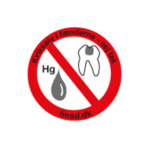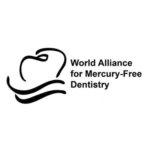In a new report, WHO supports minimally invasive techniques in order to avoid unnecessary pain, infection and permanent damage to teeth while preventing and treating caries. Decades of research into mercury-free restoration materials have resulted in products superior to amalgam in tooth friendliness, and in longevity.
Mercury-free restoration techniques are less invasive and some filling materials even react with the tooth tissue to form new, permanent tissue with a composition close to the original one. Such techniques leave more intact tooth tissue in the treated tooth, while dental amalgam placement tends to weaken the overall tooth structure (due to the significant amount of healthy tooth tissue that has to be removed). Such “minimally invasive techniques” tend to prolong the life of the tooth before implants (expensive) and/or extraction may be necessary.
Mercury-free filling materials such as composite resin and glass ionomer adhere to the remaining tooth tissue, relying on chemical bonding with tooth dentine and/or enamel for retention, unlike dental amalgam restorations, which depend on mechanical retention from the converged cavity walls.
The mercury-free adhesive technique allows the practitioner to perform a restoration that is exclusively related to the size of the defect and not subject to the requirements of the filling material. Less need for preparation results in less weakening of the tooth. Adhesive fillings are particularly indicated in the case of extensive cavities, in order to avoid tooth fractures.1
An in vivo study showed that when primary caries lesions in the occlusal surfaces of first molars were restored with amalgam, the surface occupied by the restoration was five times larger than when a composite resin was used. This means that a composite restoration can be replaced several times, if necessary, before the same amount of tooth material as with amalgam is lost. However, when composite resin restorations fail in the long term, there is no need to replace them completely as they can generally be repaired.2
In Europe, the use of tooth-colored mercury-free materials for the treatment of incisors is already common practice, and most caries in the posterior region can be treated with durable single-layer restoration materials as well.
Glass ionomer cements (GIC), compomers and especially bulk fill composites are perfectly adequate for a functional restoration, and also meet the technical and economic requirements with regard to their durability (abrasion resistance) and dimensional stability (minimal shrinkage).3
Glass ionomer cement has several properties that are favorable for all patients, including its chemical bonding and release of fluoride, its biocompatibility, its capability for thermal expansion similar to tooth structure, and its low moisture sensitivity.
Minimally invasive techniques also generate few or no aerosols, which is particularly beneficial when there is concern about possible airborne transmission of illness, such as during the COVID-19 pandemic.
Further Information:
1 Die Verwendung von Amalgam- und Kompositrestaurationen zur direkten Versorgung von Seitenzahnkavitäten in Deutschland und deren Qualität, Mathias Igelbrink, 2016 👉 https://d-nb.info/1104749076/34
2 JJM Roeters, ACC Shortall, and NJM Opdam, Can a single composite resin serve all purposes?, British Dental Journal, 73 – 79 (2005),👉 http://www.nature.com/bdj/journal/v199/n2/full/4812520a.html
3 Finding a political solution for phasing out dental amalgam in Germany, August 2020, 👉https://environmentalmedicine.eu/wp-content/uploads/Phasing-out-amalgam_IGUZMCEW_20Aug2020.pdf




















